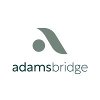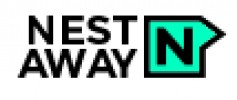Filter interviews by
ZocDoc Interview Questions and Answers
9 Interview questions
Different dashboards in JIRA include Agile, Scrum, Kanban, and Burndown charts.
Agile dashboard: Provides an overview of the project's progress using Agile methodologies.
Scrum dashboard: Focuses on sprint planning, backlog management, and team performance.
Kanban dashboard: Visualizes work in progress, bottlenecks, and cycle time.
Burndown charts: Shows the remaining work in a sprint or project over time.
Synchronization in Selenium ensures that the automation script waits for the web page to load completely before performing actions.
Use implicit wait to wait for a certain amount of time before throwing an exception if the element is not found.
Use explicit wait to wait for a specific condition to be met before proceeding with the next steps.
Use fluent wait to wait for a certain amount of time for a condition to be ...
REST is lightweight, uses standard HTTP methods, and is stateless. SOAP is more rigid, uses XML, and has built-in security features.
REST uses standard HTTP methods like GET, POST, PUT, DELETE.
SOAP uses XML for communication and has built-in security features like WS-Security.
REST is more lightweight and flexible compared to SOAP.
SOAP is more rigid and has a strict set of rules for communication.
REST is stateless, ...
Effective communication is crucial for QA Engineers to ensure clarity in requirements and feedback during the testing process.
Active Listening: I always ensure I fully understand requirements by asking clarifying questions, like 'Can you elaborate on this feature?'
Clear Documentation: I maintain detailed test cases and bug reports, ensuring they are easy to understand for developers and stakeholders.
Regular Update...
Element is a singular object, while elements refer to multiple objects.
Element is a single item in a collection or array.
Elements are multiple items in a collection or array.
Example: 'apple' is an element in the array ['apple', 'banana', 'orange'].
Example: 'banana' and 'orange' are elements in the same array.
ACID properties in SQL refer to a set of properties that ensure database transactions are processed reliably.
ACID stands for Atomicity, Consistency, Isolation, and Durability
Atomicity ensures that either all operations in a transaction are completed successfully or none are
Consistency ensures that the database remains in a consistent state before and after the transaction
Isolation ensures that multiple transaction...
Schema testing focuses on the structure of the database, while database testing focuses on the data within the database.
Schema testing ensures that the database tables, columns, relationships, and constraints are correctly defined.
Database testing involves verifying the data stored in the database, such as data integrity, accuracy, and consistency.
Schema testing is more focused on the design and structure of the d...
Boundary Value Analysis (BVA) is a testing technique used to identify errors at boundaries of input ranges.
BVA involves testing at the boundaries of valid and invalid input ranges
It helps in identifying errors that occur at the edges of input values
Examples include testing a login form with minimum and maximum character limits for password
BVA is used to ensure that the software behaves correctly at the boundaries ...
Our company's revenue model is based on subscription fees and advertising revenue.
Subscription fees from users who want access to premium features
Advertising revenue from companies who want to reach our user base
Possible revenue from partnerships and collaborations
Revenue may also come from data analysis and insights
Examples: Spotify, YouTube, LinkedIn
ZocDoc Interview Experiences
10 interviews found
I appeared for an interview in Jan 2025.
(1 Question)
- Q1. The hiring manager was a BS, he rejected by saying that the candidate was not passionate enough to join the company ..what an excuse ….if you don’t want to hire, why bother to waste the candidates time, BS...
Interview Preparation Tips
(2 Questions)
- Q1. Basic SQL Questions
- Q2. Joins, CTE etc..
(1 Question)
- Q1. Manager round with deep discussion in projects
(1 Question)
- Q1. Salary discussion
I appeared for an interview in Oct 2024.
(2 Questions)
- Q1. Difference between REST and SOAP APIs.
- Ans.
REST is lightweight, uses standard HTTP methods, and is stateless. SOAP is more rigid, uses XML, and has built-in security features.
REST uses standard HTTP methods like GET, POST, PUT, DELETE.
SOAP uses XML for communication and has built-in security features like WS-Security.
REST is more lightweight and flexible compared to SOAP.
SOAP is more rigid and has a strict set of rules for communication.
REST is stateless, meani...
- Q2. How to handle synchronization in Selenium?
- Ans.
Synchronization in Selenium ensures that the automation script waits for the web page to load completely before performing actions.
Use implicit wait to wait for a certain amount of time before throwing an exception if the element is not found.
Use explicit wait to wait for a specific condition to be met before proceeding with the next steps.
Use fluent wait to wait for a certain amount of time for a condition to be met, ...
(1 Question)
- Q1. What are different dashboards in JIRA
- Ans.
Different dashboards in JIRA include Agile, Scrum, Kanban, and Burndown charts.
Agile dashboard: Provides an overview of the project's progress using Agile methodologies.
Scrum dashboard: Focuses on sprint planning, backlog management, and team performance.
Kanban dashboard: Visualizes work in progress, bottlenecks, and cycle time.
Burndown charts: Shows the remaining work in a sprint or project over time.
Skills evaluated in this interview
(5 Questions)
- Q1. Difference between element and elements in selenium Basic sql query Acid property
- Ans.
In Selenium, element refers to a single web element while elements refer to a collection of web elements. Basic SQL query retrieves data from a database. ACID properties ensure database transactions are reliable.
Element in Selenium refers to a single web element like a button or input field
Elements in Selenium refer to a collection of web elements, like a list of links or buttons
Basic SQL query retrieves data from a da...
- Q2. Difference between element and elements
- Ans.
Element is a singular object, while elements refer to multiple objects.
Element is a single item in a collection or array.
Elements are multiple items in a collection or array.
Example: 'apple' is an element in the array ['apple', 'banana', 'orange'].
Example: 'banana' and 'orange' are elements in the same array.
- Q3. What is Bva in testing
- Ans.
Boundary Value Analysis (BVA) is a testing technique used to identify errors at boundaries of input ranges.
BVA involves testing at the boundaries of valid and invalid input ranges
It helps in identifying errors that occur at the edges of input values
Examples include testing a login form with minimum and maximum character limits for password
BVA is used to ensure that the software behaves correctly at the boundaries of in...
- Q4. What is acid property in sql
- Ans.
ACID properties in SQL refer to a set of properties that ensure database transactions are processed reliably.
ACID stands for Atomicity, Consistency, Isolation, and Durability
Atomicity ensures that either all operations in a transaction are completed successfully or none are
Consistency ensures that the database remains in a consistent state before and after the transaction
Isolation ensures that multiple transactions can...
- Q5. What is difference between schema and database testing
- Ans.
Schema testing focuses on the structure of the database, while database testing focuses on the data within the database.
Schema testing ensures that the database tables, columns, relationships, and constraints are correctly defined.
Database testing involves verifying the data stored in the database, such as data integrity, accuracy, and consistency.
Schema testing is more focused on the design and structure of the databa...
Skills evaluated in this interview
I applied via Company Website and was interviewed in Apr 2024. There were 2 interview rounds.
Writing test cases, basic sql
(1 Question)
- Q1. About previous experience and testing related topics
I applied via Approached by Company and was interviewed before Aug 2023. There were 3 interview rounds.
Basic questions around logical problem-solving skills
QA-based 'what if?' questions
(1 Question)
- Q1. Check how well you can communicate
- Ans.
Effective communication is crucial for QA Engineers to ensure clarity in requirements and feedback during the testing process.
Active Listening: I always ensure I fully understand requirements by asking clarifying questions, like 'Can you elaborate on this feature?'
Clear Documentation: I maintain detailed test cases and bug reports, ensuring they are easy to understand for developers and stakeholders.
Regular Updates: I ...
Interview Preparation Tips
- STLC
- Logic
I applied via Referral and was interviewed before May 2023. There were 3 interview rounds.
30 minutes general aptitude and ability to research on the internet are tested
(2 Questions)
- Q1. Tell me about yourself
- Q2. What are you most proud of professionally
(2 Questions)
- Q1. Tell me about yourself
- Q2. Why did you choose Zocdoc
Interview Preparation Tips
I applied via Naukri.com and was interviewed in Jan 2022. There were 4 interview rounds.
(1 Question)
- Q1. About work in previous organizations
(1 Question)
- Q1. About the technologies and tools we work
(1 Question)
- Q1. Expected output and flexiblity
(1 Question)
- Q1. Salary discussion and wilingness of work
Interview Preparation Tips
I applied via Recruitment Consulltant and was interviewed before Jul 2023. There was 1 interview round.
Hacker rank based test
I applied via Referral and was interviewed in Jan 2021. There were 4 interview rounds.
Interview Questionnaire
3 Questions
- Q1. What were the challenges you faced in your past experience.
- Q2. Why you want to join zocdoc
- Q3. What is the revenue model of our company
- Ans.
Our company's revenue model is based on subscription fees and advertising revenue.
Subscription fees from users who want access to premium features
Advertising revenue from companies who want to reach our user base
Possible revenue from partnerships and collaborations
Revenue may also come from data analysis and insights
Examples: Spotify, YouTube, LinkedIn
Interview Preparation Tips
Top trending discussions






ZocDoc Interview FAQs
Tell us how to improve this page.
ZocDoc Interviews By Designations
- ZocDoc QA Engineer Interview Questions
- ZocDoc Technical Support Specialist Interview Questions
- ZocDoc Analyst Interview Questions
- ZocDoc Quality Engineer 1 Interview Questions
- ZocDoc Staff Software Engineer Interview Questions
- ZocDoc Special Project Associate Interview Questions
- ZocDoc System Integration Advisor Interview Questions
Interview Questions for Popular Designations
- Analyst Interview Questions
- Intern Interview Questions
- Business Analyst Interview Questions
- Senior Associate Interview Questions
- Graduate Engineer Trainee (Get) Interview Questions
- Associate Software Engineer Interview Questions
- Java Developer Interview Questions
- Senior Software Engineer Interview Questions
- Show more
Overall Interview Experience Rating
based on 9 interview experiences
Difficulty level
Duration
Interview Questions from Similar Companies
|
Senior Consultant
21
salaries
| ₹11 L/yr - ₹15 L/yr |
|
Senior Associate
21
salaries
| ₹5 L/yr - ₹16.5 L/yr |
|
Software Developer
11
salaries
| ₹9 L/yr - ₹15 L/yr |
|
Data Analyst
10
salaries
| ₹4.2 L/yr - ₹14 L/yr |
|
Team Manager
8
salaries
| ₹10.2 L/yr - ₹40 L/yr |

MagicBricks

Netmeds.com

Practo

MagicPin
- Home >
- Interviews >
- ZocDoc Interview Questions














